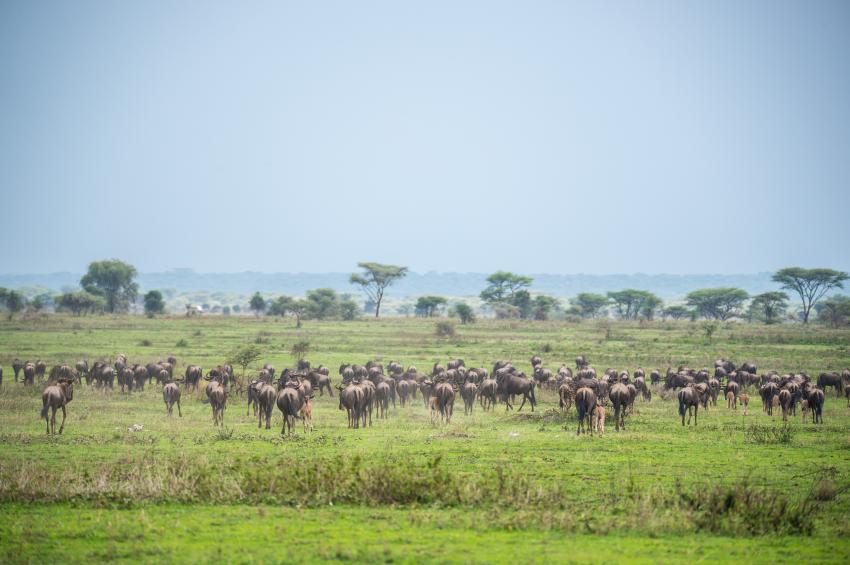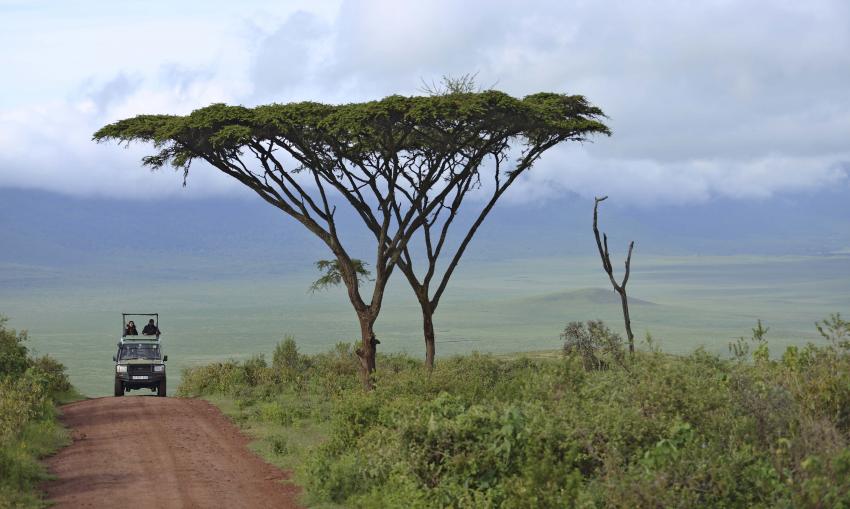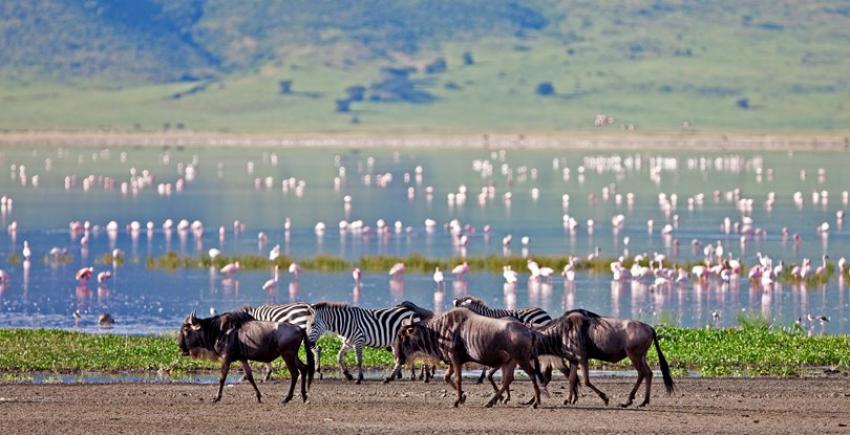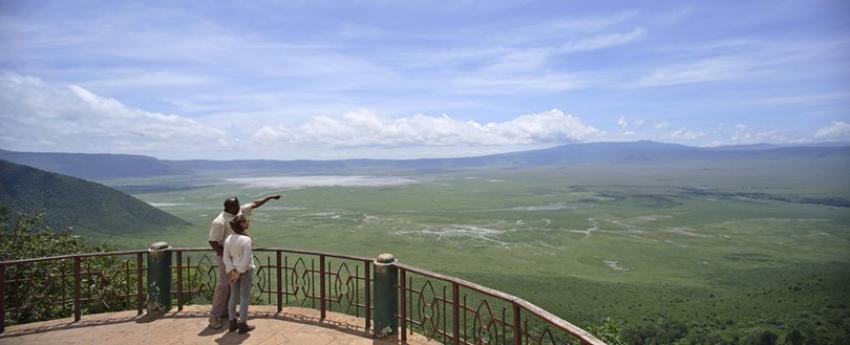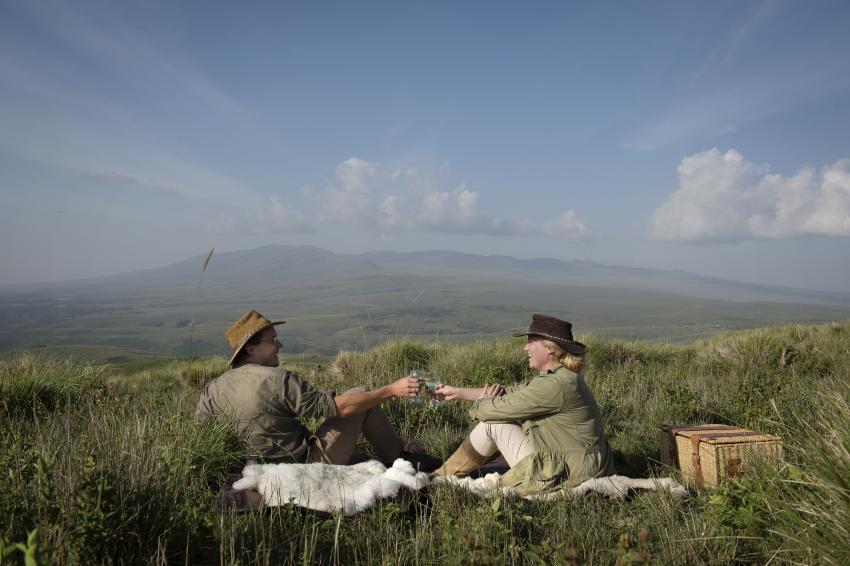Designated as a UNESCO World Heritage Site, the Ngorongoro Conservation Area is one of East Africa’s most popular safari destinations. It’s renowned for its exceptional wildlife viewing and is a highlight on Tanzania’s Northern Circuit en route to Serengeti National Park. It’s also one of the world’s first “multi-use areas”, with wildlife coexisting with the region’s semi-nomadic Maasai pastoralists.
When you mention the word “Ngorongoro”, most people have its magnificent crater in mind. But the truth is, the Ngorongoro Conservation Area encompasses several additional destinations and sites that are worth exploring. These include the “Cradle of Mankind” at Olduvai Gorge where insights into early human development were revealed and the spectacular Ndutu Region that’s a “must” for birdwatchers. Hikers can enjoy some of East Africa’s most stunning scenery while trekking through the Ngorongoro Highlands, with the chance to gain first-hand insight into the lifestyle of the Maasai people.
In this article, we’ll introduce the various areas that comprise the Ngorongoro Conservation Area and can be easily incorporated into a Tanzania safari.
Ngorongoro Crater

Hailed as one of the Seven Natural Wonders of Africa, the Ngorongoro Crater is the largest intact caldera in the world. It was once a huge volcano that erupted and is thought by many to have once been taller than Mount Kilimanjaro, the highest mountain in Africa today.
This ancient caldera is now one of the most magnificent wildlife havens on Earth, with around 25,000 animals calling it “home”. This includes the “Big 5” (black rhinoceros, elephants, lions, leopards and Cape buffalo), as well as huge numbers of blue wildebeest, Grant’s zebras and gazelles.
The natural boundaries created by the crater have resulted in one of the densest lion populations in Africa and it’s home to a staggering display of flamingos around Lake Magadi where these birds come to feed in the shallows. While the wildlife viewing is at its best during the dry season, you can expect to see more buffalo and eland during the wet as they migrate into the crater with the coming rains.
Ngorongoro Highlands

While the Ngorongoro Crater is the focus of most visitors to the region, the surrounding highlands should not be overlooked. Hikes through the Ngorongoro Highlands traverse breathtakingly beautiful countryside, thick mountain forests and sweeping tracts of savannah while offering a variety of animal sightings along the way. It’s a unique way of gaining insight into the lifestyle of the Maasai people who have called this area “home” for centuries.
You can trek to the edge of the Great Rift Valley and descend to the foot of Mount Ol Doinyo Lengai, which is known to the Maasai as the “Mountain of God”. Then continue to the picturesque shores of Lake Natron, which provides a breeding ground for pink-hued flamingos.
Olduvai Gorge

Considered one of the most important paleo-anthropological sites in the world, Olduvai Gorge lies just to the northwest of the Ngorongoro Crater. This steep-sided ravine takes its name from the Maasai world “oldupai”, which translates as “the place of the wild sisal” - a flowering plant that grows in abundance in the region. Located in the rain shadow of the Ngorongoro Highlands, it is one of the driest parts of the Ngorongoro Conservation Area.
Olduvai Gorge was visited by several archaeologists during the early 20th century but it is Mary and Louis Leakey who are responsible for leading the excavations that greatly advanced our knowledge of early humans. Through their findings and research, Olduvai Gorge revealed the developmental changes and social complexities of early hominids, particularly in their transition from scavenging and hunting to the use of stone tools. The concentration of animal remains and tools found in one area was evidence of increasing communal activity and cognitive capacities as hominids transitioned into humans.
Today, you can delve into early human history at the Olduvai Gorge Museum, which is one of the largest onsite museums in Africa. It perches on the rim of the gorge and features exhibits dedicated to the Leakey family and artefacts that were discovered at Olduvai Gorge. The road leading to the museum is marked by the Olduvai Gorge Monument - large-scale model fossil skulls depicting two contemporary species that were discovered at Olduvai Gorge.
Ndutu Region

Stretching between the northern part of the Ngorongoro Conservation Area and the southern reaches of Serengeti National Park, the Ndutu Region features open grasslands, acacia woodlands and alkaline lakes. It offers exceptional wildlife and birdwatching during the green season and has been used as a research base for countless biologists that include Jane Goodall and Hugo van Lawick. Hundreds of thousands of wildebeest, zebras and antelopes pass through the area during their annual migration and it’s a popular place to witness the herds calving in February.
During the dry season, Ndutu is visited by nomadic pastoralists who come to graze their livestock here as it’s one of the few permanent water sources in the region. Giraffes, elephants and hyenas can often be spotted around the waterholes between June and November while elusive cats such as cheetahs and leopards are present throughout the year.
When is the best time to visit the Ngorongoro Conservation Area?

While the Ngorongoro Conservation Area offers outstanding wildlife viewing throughout the year, the dry season from June to October is generally considered the best time to visit. Aside from offering sunny skies and limited rain, the grass is much shorter during this period, which makes the animals easier to spot. That being said, lodge and camp rates are at their highest and you can expect far more other tourists compared to the wet season.
November to May is the wet season when the landscapes of the Ngorongoro Conservation Area transform a lush green. Short afternoon showers are the norm, meaning you can usually plan your daily activities around them. The “green” season is an ideal time to visit for birdwatching, with many migratory species arriving in the area to take advantage of the wetlands.
Want to plan a safari to the Ngorongoro Conservation Area? At Vencha Travel, we offer a range of bespoke tours staying at permanent luxury lodges and mobile tented camps in the region.

 1-321-766-6821
1-321-766-6821 
